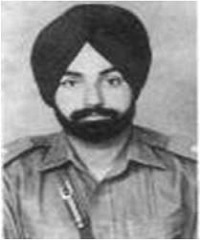
Service No : IC-4466
Date of Birth : September 19, 1928
Place of birth : Ludhiana Dist(Pun)
Service : Army
Last Rank : Major
Unit : 4 Horse (Hodson's Horse)
Arm/Regt : The Armoured Corps
Operation : Op Riddle
Awards : Maha Vir Chakra
Martyrdom : October 3, 1965
Major Bhupinder Singh MVC
Major Bhupinder Singh hailed from Harnampura village in Ludhiana district of Punjab and was born on 19 September 1928. He was the son of Shri Sajjan Singh, who instilled in him the values of hard work, discipline, and integrity from an early age. After completing his education, Maj Bhupinder Singh was driven by a sense of duty and pride to serve the nation, which led him to join the Indian Army. On 11 December 1949, at just 21 years of age, he was commissioned into the prestigious Hodson’s Horse (4th Horse), one of the most decorated and oldest armoured regiments of the Indian Army. Over the years, through his dedication, professionalism, and courage, he steadily grew in stature within the regiment. By 1965, after more than 15 years of service, he had risen to the rank of Major.Major Bhupinder Singh was known among his peers and subordinates as a determined and dependable officer. His leadership style was defined by his unwavering belief in leading from the front and sharing every risk and hardship with his men. This earned him deep respect within his unit.
When the Indo-Pak War of 1965 broke out, Major Bhupinder Singh’s unit, Hodson’s Horse, was deployed in the Punjab sector—a critical theatre of operations during the conflict. The region witnessed some of the fiercest tank battles and infantry-armour engagements of the war. In these high-stakes operations, Major Bhupinder Singh played a vital role, displaying the grit, tactical acumen, and courage that had come to define his military career
Battle of Phillora (Indo Pak War): 19 Sep 1965
When the Indo-Pak War of 1965 broke out, the Sialkot sector became the scene of some of the fiercest tank battles in history. The Battle of Phillora, fought from 10 September onwards, was one of the largest tank battles of the war and the first major engagement between the two nations in the sector. India’s 1st Armoured Division, equipped with four armoured regiments including Hodson’s Horse, was tasked with a massive offensive against Pakistan’s 6th Armoured Division. Pakistani forces resisted strongly and even launched repeated air attacks, but these inflicted little damage on the Indian tank columns. For three days, intense fighting raged, during which the Pakistani forces, facing mounting losses, were compelled to withdraw towards Chawinda. By this stage, the Indian troops had destroyed 67 enemy tanks. In this battle, Major Bhupinder Singh was commanding ‘B’ Squadron of 4 Horse, which was assigned to cut the enemy’s line along the Gadgor–Phillora road and to provide a fire base for the assault on Phillora. Leading from the front, he displayed remarkable tactical skill and inspiring courage. Under his command, the squadron inflicted heavy destruction on Pakistani tanks and equipment, playing a decisive role in tilting the battle in India’s favour.
Major Bhupinder Singh’s leadership shone once again during the subsequent Battle of Sodreke on 19 September. With bold manoeuvres and effective deployment of his squadron, he helped change the course of the battle. His tank came under enemy fire several times, but he refused to relinquish command, continuing to inspire his men through acts of personal gallantry. In one incident, when his own tank was damaged, he bailed out safely but immediately went back to rescue a comrade, exemplifying camaraderie and selflessness. Tragically, on 19 September—his 37th birthday—while leading another daring attack, his tank was struck by an enemy Cobra missile. By that time, he had already destroyed four enemy tanks. The missile strike caused a devastating fire that engulfed the tank. The driver was killed instantly, while Major Bhupinder Singh and his gunner, Sowar Vir Singh, sustained grievous burns and injuries. Both were evacuated to medical facilities and later shifted to the Military Hospital in Delhi. Although Sowar Vir Singh eventually recovered, Major Bhupinder Singh succumbed to his injuries on 3 October 1965.
For his exceptional bravery, inspiring leadership, and supreme sacrifice in the highest traditions of the Indian Army, Major Bhupinder Singh was awarded the nation’s second-highest wartime gallantry award, the Maha Vir Chakra, posthumously. His courage and selfless service remain a shining chapter in the history of the Indian Armoured Corps and a lasting inspiration for generations of soldiers.
24 Comments
« Previous 1 2 3

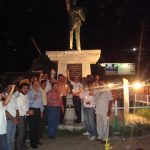
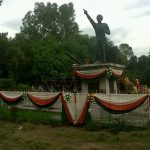
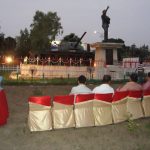
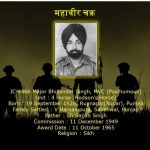
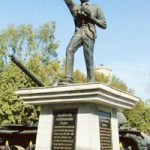
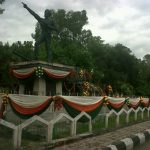
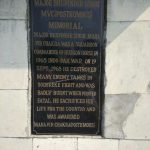
Deepak badyal
2024 at 10:22 amRequest for support to re-install the statue of Major Bhupinder Singh MVC and a Patton tank at Bharat Nagar Chowk. This monumental structure became an integral part of our city’s heritage and a symbol of glory for Bharat Nagar Chowk. Unfortunately, on December 7, 1995, the Ludhiana Municipal Corporation decided to relocate this cherished statue and tank outside the Government College of Girls near Bharat Nagar Chowk.
Despite our strong objections at that time, we were informed that the move was necessitated due to traffic concerns. Subsequently, during the construction of the flyover on Ferozepur Road in Ludhiana, the administration once again in Sept 2020 relocated the statue and Patton tank to a location near Nehru Rose Garden. Our pleas to preserve this historical landmark went unheard, and we lost an essential part of our city’s heritage with the removal of the statue & Patton Tank from Bharat Nagar Chowk Ludhiana. need the support of his regiment and the Ministry of Defence to reinstall his statue’s glory.